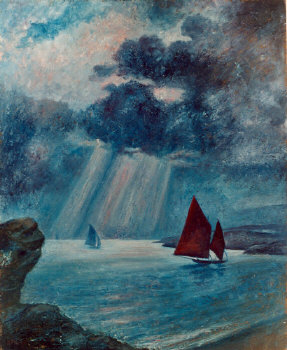
 |
G
A L L E R I E S |
|||
 |
How to Navigate in this Site Using the Galleries provides a comprehensive and organized view of Alexandra Pregel's work. The galleries are arranged first by medium, then by topical genre and finally paintings are shown chronologically; the chronology of watercolors and illustrations is often less certain. The links in the Galleries menu bar above lead to thumbnail navigators, then to large scale image pages which have been designed to give the largest possible view with standard screen resolutions. Navigation of the Galleries has been organized to allow visitors flexibility in viewing and comparing individual items. Please
note: Each gallery navigator and each image page opens in its
own new window to allow you to make comparisons. You can move windows
around on your screen, minimize and restore them and close them when you
are finished. You can choose from a list of open browser windows in the
Windows Task Bar or the Macintosh OS X Dock, or from the Go
or Windows tabs in most
browsers. The large scale image pages have a menu bar to allow you to
open any of the unopened main navigators. |
|
Alexandra Pregel's Work Alecia Voiskoun, Curator of The Maria and Mikhail Zetlin Museum of Russian Art in Israel made the following comments for an exhibit in 2000:
For other views about Alexandra Pregel's art visit a site created for an exclusive exhibit at the University of Illinois, Springfield. |
||
Copyright 2005 Julia Gauchman All rights Reserved |
||
| . 06/27/2008 23:39 |